It is essential to identify real tomato plants when you see them.
Then you’ll know whether you have an actual tomato plant or a (potentially poisonous) weed in your garden.
Resembling natural tomato plants are these 11 weeds – some poisonous.
- Horse Nettle
- Black Nightshade
- Red Soda Apple
- Jamaican Nightshade
- Litchi Tomato
- Lycium Carolinianum
- Wild Berry
- Garden Huckleberry
- Persimmon
- Solanum Pimpinellifolium
- Lycium Carolinianum (Carolina Wolfberry).
Tomatoes are a group of edible fruits containing several varieties.
Their colors are glossy red and sometimes yellow. They are pulpy edible fruits eaten as cooked vegetables or raw in salads.
They are substantial edible berries and one of the most common garden plants.
So, if you discover a plant in your garden that looks like a tomato – you need to know that it’s real, or you could be dealing with a toxic plant and not be aware.
Weeds That Look Like Tomatoes, here they are:
Some weeds that look like tomatoes could either be from the same or unrelated family of plants. Take a look at the following plants:
1. Horse Nettle
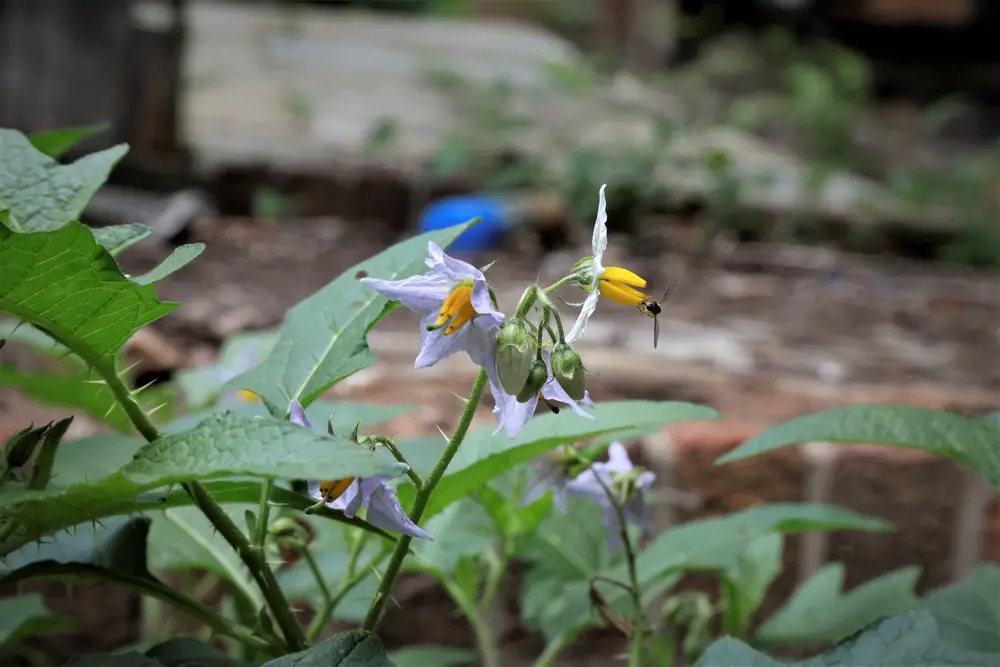
The Horse nettle is a wild type of tomato plant. This kind of plant looks like a tomato.
A native perennial, it has spiny stems and leaves.
The color of the flower is white to purplish with toxic fruit that looks like tiny yellow tomatoes.
However, its fruit is yellow instead of red, and it’s not edible because it is poisonous.
The rest of the plant looks like a tomato plant. You can see spikes that run through the entire plant from the tips of the leaves down to the stem.
Horse Nettle is a weed that can be seen and is common throughout the midwest in pastures, fields, and waste areas.
Most animals avoid eating it because of the spikes. These spikes help you identify it. Generally, all parts of the plant are poisonous – including the fruit. You must avoid it.
2. Black Nightshade
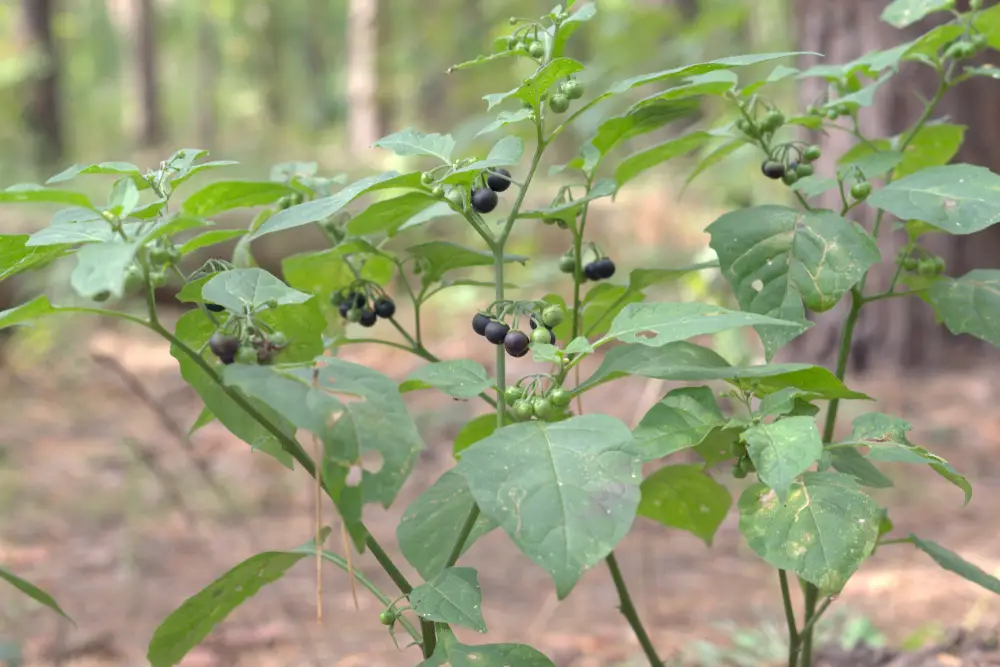
Black Nightshade looks more like a cherry tomato, but it isn’t real. This plant produces black or dark purple fruits, which are poisonous when green and iffy when another color.
The leaves look like tomato plants but have solanum, a toxic alkaloid. They are in the same family as tomatoes, but you can’t eat them.
You could find black Nightshade growing across Texas and the eastern United States. It grows in thickets, disturbed soil, and openings near wooded areas.
One way to spot the difference is that the fruits ripen to a dark purple or black, and some consider this plant a weed.
This species has a deeply plucked leaf and can be found from the West Coast through Minnesota, Iowa, and Missouri. Cut-leaved Nightshade is to be regarded similarly.
3. Red Soda Apple
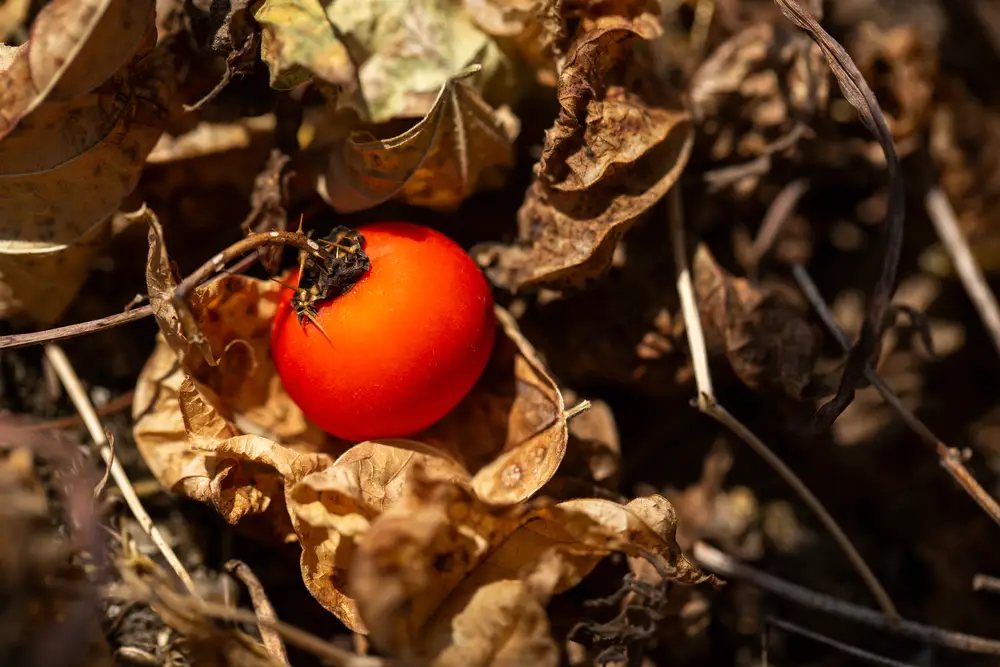
Red Soda Apple is another plant that looks like a tomato plant.
This is a perennial shrub most likely spread similar to a tomato plant. This shrub produces round and red fruit, like the cherry tomato.
You might find it difficult to tell the difference at first glance.
However, the fruit of the Red Soda Apple is toxic – the seeds and the skin have high levels of toxins, so you must avoid it.
Red soda apple plants come from Brazil and grow in southern Florida.
Its prickles can distinguish the distinctive characteristics of this plant on the stems, petioles, and leaves.
This plant is one of the most similar plants to a tomato that you can find. So, it is more important to recognize it since it is a toxic and poisonous plant.
The toxin level is high in both the seed and the skin. In comparison, the fruit’s meat can be eaten – at what risk? – but in a moderate amount.
4. Jamaican Nightshade
Another kind of weed that looks like a tomato plant is the Jamaican Nightshade.
It is also a perennial shrub and can be found in an open area. The Jamaican Nightshade leaves are shaped like diamonds. It has stellate hairs and grows in subequal pairs.
The fruits of this plant look like tiny reddish oranges or small cherry tomatoes. The size is around a third of an inch in diameter.
This plant is considered a wild tomato plant. However, the fruit is not edible. It’s found in Southern Florida and is considered an invasive shrub.
5. Litchi Tomato
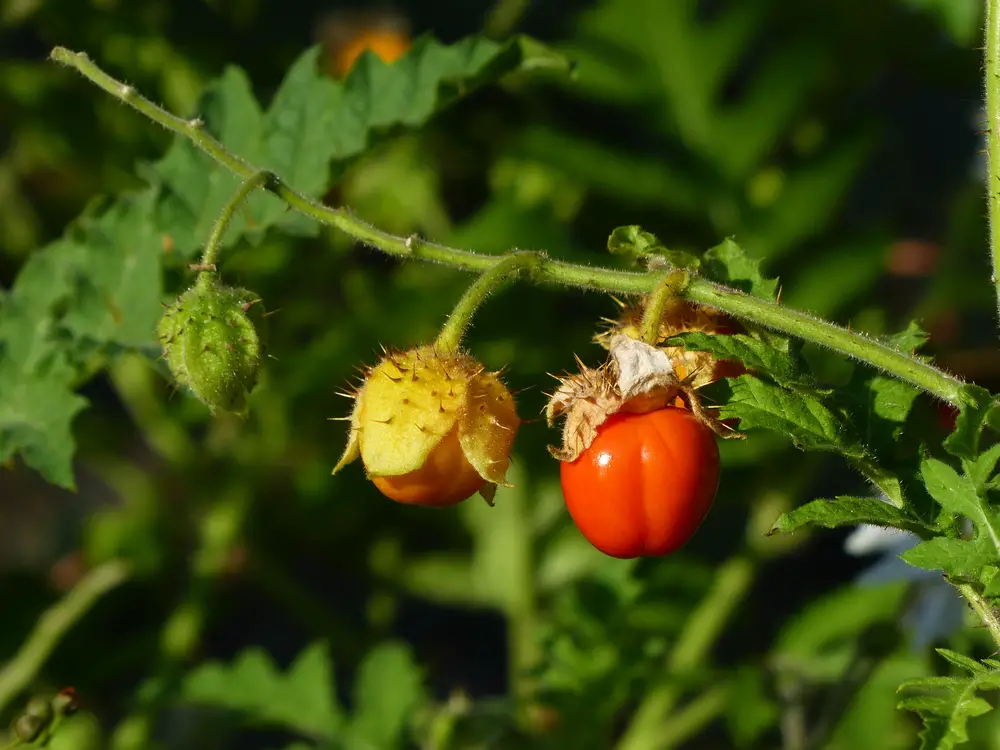
The Litchi Tomato looks like a tomato plant but has thorns on the leaves, underside and stems. It is commonly known as thorn tomatoes.
However, if you don’t notice those thorns, the plant looks more like a tomato plant.
This plant produces round fruits that are dark red with yellow flesh color.
This fruit is about the size of a cherry tomato and has a husk inside, similar to ground cherries. The seeds are also like cherry tomato seeds.
The fruit is edible, and you can eat it when it is ripe. It is easier to pluck the fruit from the stems.
This plant is native to South Africa and Brazil and is also found in the Southern United States.
6. Lycium Carolinianum (Christmas Berry)
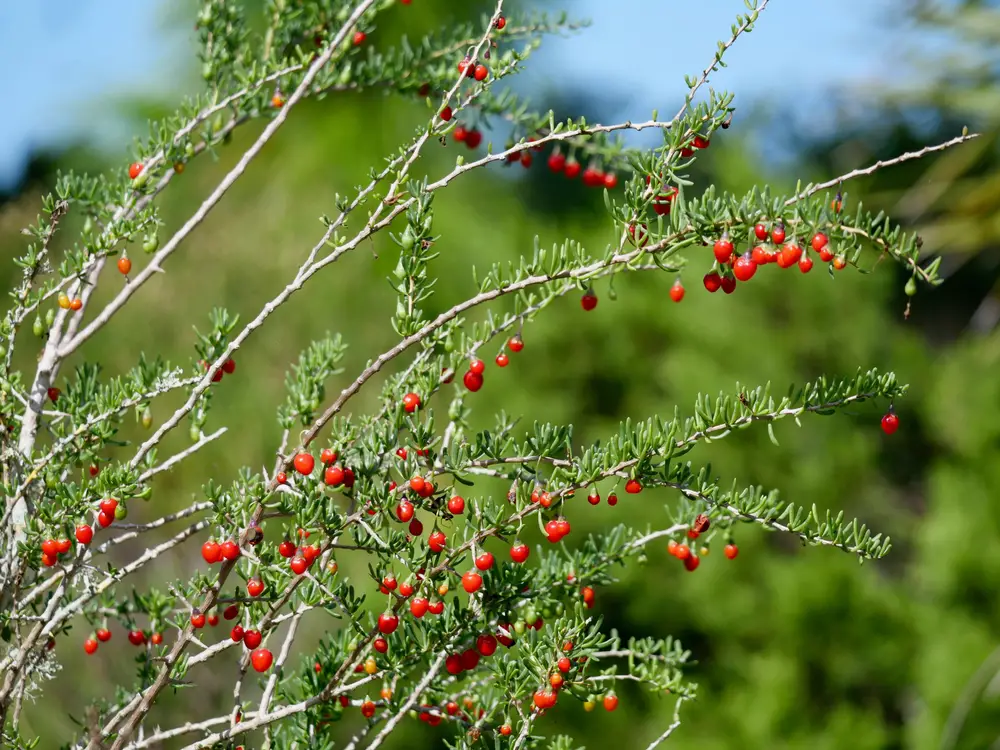
It is a toxic perennial with prickly leaves and lethal fruits that resemble small red tomatoes. Eating the plant can be fatal when taken in large amounts.
Considered a weed with white to purple flowers that bloom in a range of colors in linear clusters at the terminals of the stalks, this plant should be easy to recognise.
It bears a smooth, red-colored fruit that ripens to the consistency of a tiny tomato and may be eaten all through the winter months.
The Christmasberry is a relative of the Goji berry (L. barbarum, L. chinense). The plant is also known as Carolina desert-thorn, referring to the thorns occasionally growing along its branches.
An evergreen woody shrub, the Christmasberry can be found along salt marsh, mangrove edges, and on dunes in Florida’s coastal counties.
The plant gets its common name from the bright red berries that appear in profusion in December. It belongs to the Nightshade or Tomato Category, the Solanaceae, based on the fruit’s resemblance to a tomato.
Christmasberry’s solitary flowers are tiny (about 1/2 inch in diameter), have 4 – 5 lobes and vary in color from deep lavender to bluish-white with white centers.
Leaves are small, thick, bright green and arranged alternately.
Branches are rigid and often armed with thorns. Fruits are green, egg-shaped berries that turn bright red and fleshy as they mature.
7. Wild Berry
The Wild Berry, is also known as the Wild Cherry, and can be a source of very tasty fruit.
It is not to confuse this plant with the tomato because Wild cherries closely resemble Cherry Tomatoes.
It is said that the fruit makes for good eating, yet its wilting leaves will often gather cyanide concentrations. This proves fatal to livestock or farm animals.
Avoid eating the pits of the cherries, as they contain cyanide in trace amounts. In fact, we think it’s not worth even considering eating this fruit!
There are native wild berry species that can also be weeds under certain conditions. Of these weedy species, some are vigorous and troublesome.
Typically, first-year stems grow in length. In the second year, stems produce flowers and fruits, and often have leaves with varying leaflets.
The fruiting stems usually die after they put out fruit.
8. Garden Huckleberry
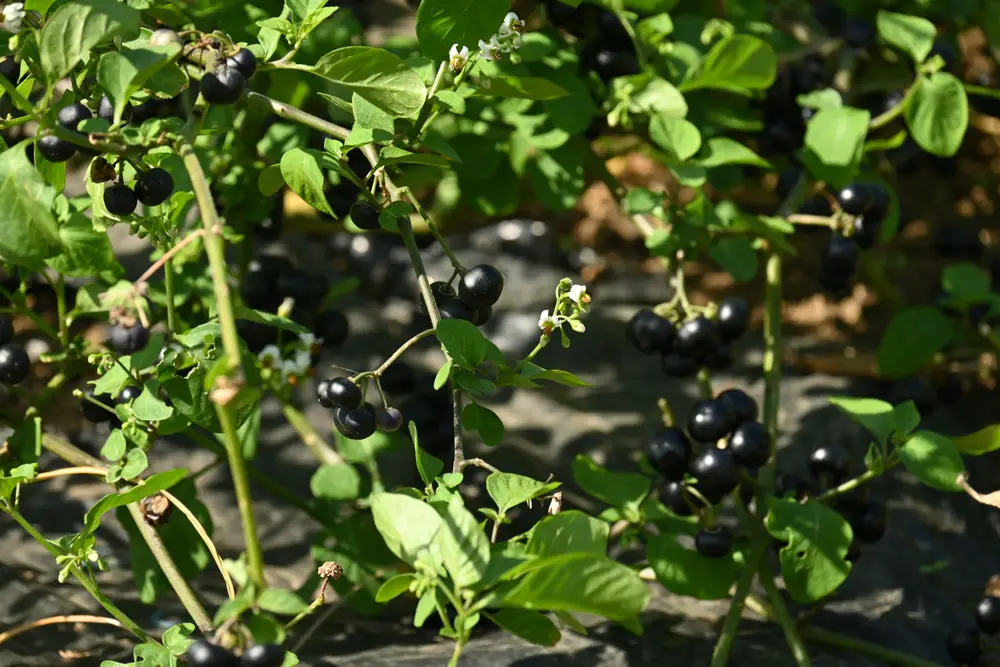
Here is another species in the nightshade family – the Garden Huckleberry or Solanum Scabrum.
It’s cultivated as a leaf vegetable in parts of Africa, and its fruit, smallish berries, is purple red. It makes excellent dyes.
This plant is considered a weed as it belongs to the Nightshade family.
The Nightshade is poisonous and causes sickness and even death in all animals after eating raw stems and leaves.
We’re told that the Garden Huckleberry is an edible form of the common nightshade weed plant. However, we would stay well away from the option of handling or tasting.
It is also known as quonderberry, wonderberry, sunberry, morella, petty morel, solanberry, black berried Nightshade.
This garden huckleberry plant clusters of about six small white flowers are borne along the main stems.
The fruit berries are ½ inch in diameter, green when immature and black when mature.
9. Persimmon
The Persimmon is also known as kaki in China and Japan.
It is a popular and widely produced fruit initially brought to France and other Mediterranean nations in the 18th century and has since spread worldwide.
It also produces delectable fruits. The good thing about this fruit is eaten raw and it is sweet with no acidic flavor.
The persimmon leaves are eaten as a cooked vegetable, often used in soups. This weed that looks like a tomato plant is young, and the leaves can be cooked and eaten as greens.
10. Solanum Pimpinellifolium
Pimpinellifolium is also called currant tomato because of its currant-like appearance.
It is a wild tomato species native to Ecuador and Peru that has spread to other regions of the globe.
Even though it is classified as a wild rather than domesticated plant, it is often produced in gardens in the form of vine-ripened tomatoes, which are comparable to the commercially farmed tomato variety Solanum Lycopersicum.
The Tomato plant is more adaptable to practically all climates across the globe.
That being said; however, unfavorable environmental factors are the critical restrictions to this crop’s output potential.
Simultaneous mutagenesis at several loci is possible by combining multiple target DNA templates into a single construct.
At present, domesticated tomatoes cultivated in the field are more susceptible to bacterial and salt stress.
Still, a wild-related contemporary tomato, Solanum pimpinellifolium, is resistant to these stresses. But somehow it severely harms fruit production shape and size.
11. Lycium Carolinianum (Carolina Wolfberry)
This plant is a poisonous perennial with prickly leaves. This is also known as Carolina wolfberry contains fatal fruits that resemble little yellow tomatoes.
It blooms flowers of white to purple in linear clusters at the ends of the stalks in a variety of colors.
Further, it has a smooth, golden-coloured fruit that ripens to the consistency of a tiny tomato and may be eaten all through the winter months because of its versatility.
Most of the plant’s ingredients are lethal if consumed in large amounts. Once again, we advise keeping a healthy distance between you and this plant!
Based on the fruit’s likeness to a tomato, you could easily identify this plant as part of the Nightshade or Tomato Category.
The tiny number of Solanaceae species that have succulent leaves makes it easy to quickly identify this plant once you know them.
The red, tomato-like fruit of the Carolina Wolfberry is said to be edible with tiny seeds and an unflavored taste.
Real Tomato Plants

Real tomatoes have ten inches long leaves, and the smaller leaflets are around three inches.
Tomato leaves are wavy and pointed. They naturally grow in groups along a standard stem. Those leaves have tiny hairs, which are called trichomes.
A Mexican Nahuatl word tomatl gave rise to the Spanish word tomate, from which the English word tomato derived.
Tomatoes are widely grown as a cash crop, and many varieties have been developed. This edible fruit is ready for picking for a few short months when it is ripe.
Therefore, there are many different kinds of plants that grow in the world. It may come as no surprise that some plants resemble others.
This may include some weeds that look like tomatoes.
Generally, they may have similarities in terms of the fruits they grow. Some may have similarities between the leaves and other parts. So, you may think that it really is a tomato.
Final Thoughts on Weeds That Look Like Tomatoes
When it comes to weeds, prevention is always better than cure.
We must always know and understand that what you planted in the first place is half the fight in determining whether or not it is a weed or veggies.
This is one of the weeds that have the look of a tomato plant. It’s unlikely that you just tossed seeds into the ground.
Most of the plants that look like tomatoes often have fruits that are toxic and dangerous to eat.
It is very important to know how to identify them so that you don’t eat them.
Most likely, they have thorns, and the fruit can be of a different color. If you have these weeds growing in your yard, you must remove them as a matter of urgency and safety.
We wish you all happy and healthy gardening!
Read More:
How to Grow Tomatoes in a PVC Pipe (With Images)
What Should Not be Planted with Tomatoes? (Worst Companion Plants)
Top Tips on How to Know When Tomatoes Are Ready for Picking
Can Tomatoes Grow in Indirect Sunlight? (What Could Go Wrong?)
